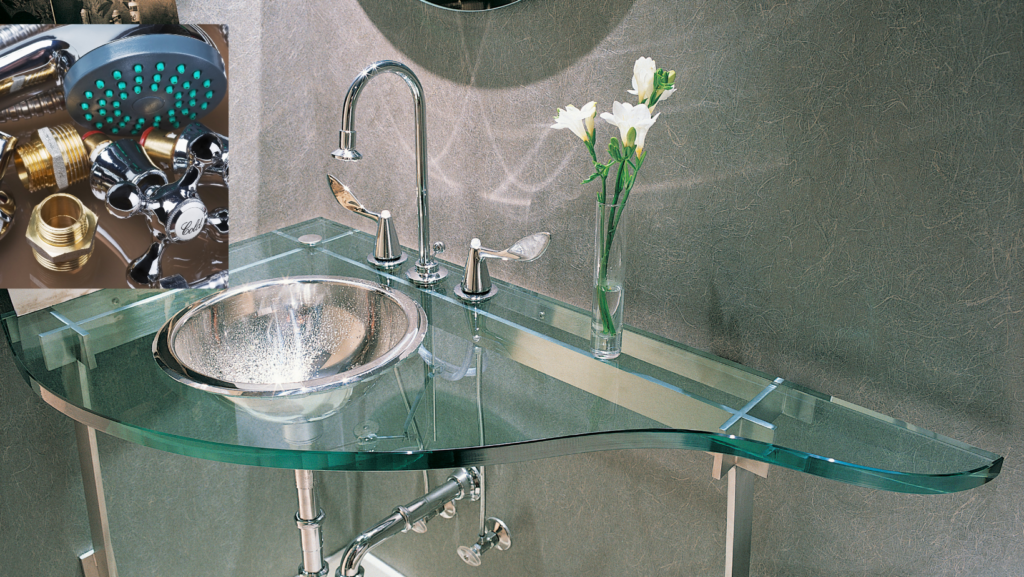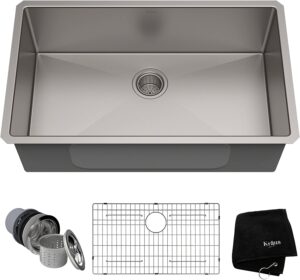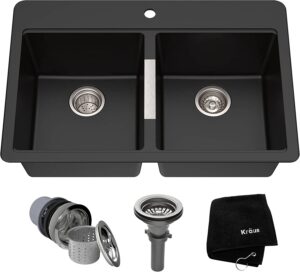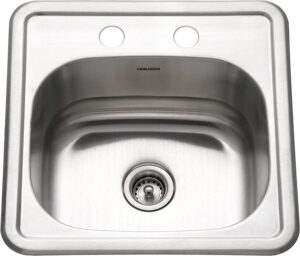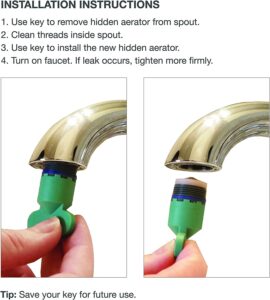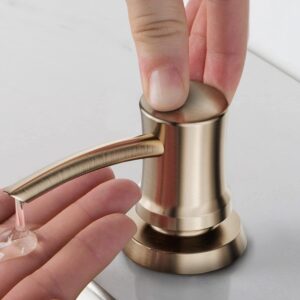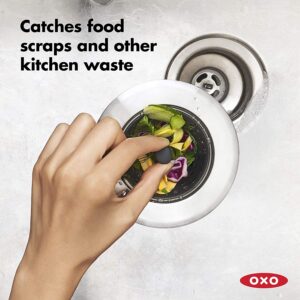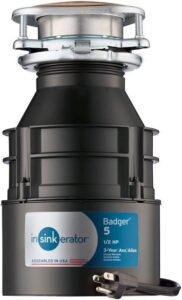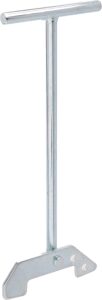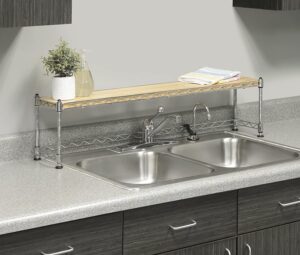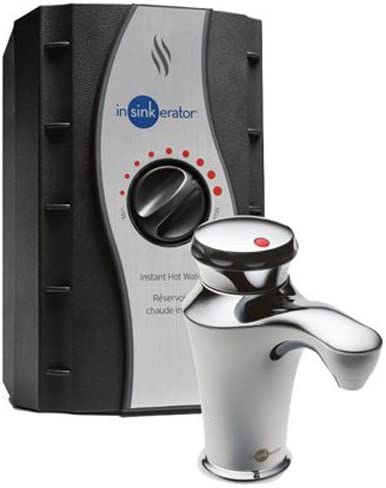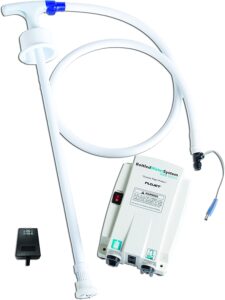Here’s a description of some essential kitchen and bathroom fixtures
Faucets – used for controlling the flow of water in sinks and showers. There are many types of faucets, including single-handle, double-handle, and touchless models.
Sinks – used for washing hands, dishes, and other items. Sinks come in a variety of materials and styles, such as stainless steel, porcelain, and farmhouse.
Showerheads – used for spraying water in the shower. There are many types of showerheads, including handheld, rain shower, and massaging models.
Bathtubs – used for taking baths. Bathtubs come in a variety of sizes and styles, including freestanding, built-in, and corner models.
Toilets – used for flushing waste. Toilets come in a variety of styles, including one-piece and two-piece models, and some are equipped with features such as dual-flush and heated seats.
Vanities – used for storage and countertop space in bathrooms. Vanities come in a variety of styles and materials, and often include a sink and mirror.
Countertops – used for preparing food and storing items in the kitchen. Countertops come in a variety of materials, such as granite, quartz, and laminate.
Cabinets – used for storing items in the kitchen. Cabinets come in a variety of styles and materials, and often include features such as pull-out drawers and soft-close hinges.
Backsplashes – used for protecting walls from water and food splashes in the kitchen. Backsplashes come in a variety of materials, such as tile, glass, and metal.
These are just a few examples of the essential kitchen and bathroom fixtures that are commonly used in homes.
1. Single Bowl
Single bowl is a term used to describe a type of sink that has only one basin for washing, rinsing, and draining. This type of sink is commonly used in kitchens and is available in a variety of materials, including stainless steel, porcelain, and granite.
Single bowl sinks are ideal for small kitchens or kitchens with limited counter space, as they take up less room than double bowl sinks. They also offer more space for washing large pots and pans or other items that may not fit in a double bowl sink.
Single bowl sinks can be mounted in a variety of ways, including top mount, under mount, and flush mount. They are also available in a variety of shapes, including rectangular, square, and circular, to fit the style and design of the kitchen. (See More)
2. Double Bowl
Double bowl is a term used to describe a type of sink that has two separate basins for washing, rinsing, and draining. This type of sink is commonly used in kitchens and is available in a variety of materials, including stainless steel, porcelain, and granite.
Double bowl sinks offer the advantage of allowing you to do multiple tasks at once. For example, you can use one basin for washing dishes while the other is used for rinsing or food preparation. They are also useful if you want to separate your clean and dirty dishes, or if you need to soak something in one basin while using the other for something else.
Double bowl sinks can be mounted in a variety of ways, including top mount, under mount, and flush mount. They are also available in a variety of shapes and sizes to fit the style and design of the kitchen. Double bowl sinks can be a good option for larger kitchens with ample counter space or for households that have a lot of dishes to wash. (See More)
3. Bar Sinks
A bar sink is a small sink that is typically installed in a bar area or entertainment space. It is designed to be used for rinsing glasses, washing small items, or preparing drinks, and is often used as a secondary sink in addition to the main kitchen sink.
Bar sinks are usually smaller than standard kitchen sinks, with a basin that is typically around 15 to 18 inches in diameter. They are available in a variety of materials, including stainless steel, porcelain, and copper, and can be mounted in a variety of ways, including top mount and under mount.
Some bar sinks may come with additional features, such as a built-in cutting board or colander, and may have a variety of faucet options, including pull-out or spray faucets.
Bar sinks are a convenient addition to any entertainment space, as they allow you to keep your main kitchen sink free for food preparation and other tasks. They also add a touch of style to your bar or entertainment area, and can help make entertaining guests more efficient and enjoyable. (See More)
4. Kitchen Sink Aerator
A kitchen sink aerator is a device that is attached to the end of a kitchen sink faucet to help conserve water and reduce the amount of water that flows through the faucet.
An aerator typically consists of a small mesh screen that mixes air with the water as it flows through the faucet. This creates a stream of water that is both softer and more efficient, allowing you to use less water while still maintaining adequate water pressure.
Kitchen sink aerators are available in a variety of sizes and flow rates, depending on the type of faucet and the amount of water flow needed for various tasks. Some aerators may also have additional features, such as a swivel head that allows you to direct the water flow where you need it.
Using a kitchen sink aerator is an easy and cost-effective way to conserve water and reduce your water bill. It is also an environmentally friendly option that can help you reduce your household’s overall water consumption. ( See More)
5. Built In Soap Dispenser
A built-in soap dispenser is a device that is installed directly into a kitchen or bathroom sink to dispense liquid soap or other liquids.
Built-in soap dispensers typically consist of a small pump that is placed below the sink, with a dispenser nozzle that is mounted on the sink or countertop. The pump is connected to a soap reservoir, which can be filled with your preferred liquid soap or other liquids, such as lotion or hand sanitizer.
Built-in soap dispensers offer a number of advantages over traditional soap dispensers. They are more convenient, as they are always within easy reach and eliminate the need for bulky soap bottles on the sink or countertop. They are also more hygienic, as they can be easily cleaned and help reduce the spread of germs.
Built-in soap dispensers come in a variety of styles and finishes, allowing you to choose one that complements your sink or countertop design. They are typically easy to install and require little maintenance, making them a convenient and practical addition to any kitchen or bathroom. (See More)
6. Sink Strainer
A sink strainer is a small device used in plumbing to prevent debris, such as food scraps and hair, from entering the plumbing system and clogging the drain. It is typically a small, round, mesh or perforated device that fits over the drain in a sink or bathtub. The strainer catches the debris, allowing water to flow through the drain unimpeded.
Sink strainers are often made of stainless steel, plastic, or rubber and can be easily removed for cleaning. They are commonly used in kitchen sinks, bathroom sinks, and bathtubs to prevent blockages and reduce the need for expensive plumbing repairs. Sink strainers are an inexpensive and effective way to maintain the health and functionality of your plumbing system. (See More)
7. Garbage Disposal
A garbage disposal, also known as a food waste disposer, is an electrically powered device that is installed underneath a kitchen sink and is used to grind up food waste into small particles. These particles can then be flushed down the drain, rather than thrown in the trash.
Garbage disposals typically consist of a motor, a shredder ring, and impellers that grind up food waste. When activated, the motor spins the shredder ring and impellers, which break down the food waste into small pieces. The ground-up food particles are then washed down the drain with water.
Garbage disposals offer several benefits, including reducing the amount of food waste that goes into landfills, reducing odors and pests associated with food waste, and making cleaning up after meals more efficient. They are also relatively easy to install and require minimal maintenance.
However, it is important to note that not all food waste can be disposed of in a garbage disposal. Hard items like bones and fibrous foods like celery and corn husks should not be put in a garbage disposal, as they can damage the blades and cause clogs in the drain. It is also important to run water while using the garbage disposal to help flush the food waste down the drain and prevent clogs. (See More)
8. Garbage Disposal Parts
Garbage disposals are made up of several parts that work together to grind up food waste and dispose of it down the drain. Some of the most common garbage disposal parts include:
Mounting assembly: This part attaches the garbage disposal to the underside of the sink.
Motor: The motor is the power source for the garbage disposal and drives the blades.
Impellers: Impellers are attached to the motor shaft and help to grind up food waste.
Shredder ring: This part is located above the impellers and helps to break up food waste.
Flange: The flange is the part of the garbage disposal that connects to the sink drain.
Stopper: The stopper is used to plug the sink drain and prevent debris from falling into the garbage disposal.
Reset button: The reset button is located on the bottom of the garbage disposal and can be used to reset the unit if it becomes jammed.
Electrical wiring: The electrical wiring connects the garbage disposal to an electrical outlet or circuit.
Splash guard: The splash guard is located at the top of the garbage disposal and helps to prevent food waste and water from splashing out of the unit.
Blades: The blades are located on the impellers and are responsible for grinding up food waste.
If a garbage disposal part becomes damaged or worn, it may need to be replaced. It is important to use compatible replacement parts to ensure the safe and efficient operation of the unit. (See More)
9. Sink Installation Parts
When installing a sink, there are several parts and accessories that are required to ensure proper installation and function. Some of the most common sink installation parts and accessories include:
Sink mounting clips or brackets: These are used to secure the sink to the countertop or cabinet.
Silicone sealant: Silicone sealant is used to seal the gap between the sink and the countertop or cabinet to prevent water from seeping in.
Drain assembly: The drain assembly includes the drain flange, tailpiece, drain basket, and strainer. It connects the sink to the drain and allows water to flow out of the sink.
P-trap: The P-trap is a curved section of pipe that connects the drain assembly to the main drain line. It prevents sewer gas from flowing back into the sink and also catches debris that may have accidentally fallen down the drain.
Supply lines: Supply lines are used to connect the sink to the hot and cold-water supply. These are typically made of flexible braided stainless steel or plastic tubing.
Garbage disposal mounting assembly: If a garbage disposal is being installed, a mounting assembly will be needed to attach the unit to the sink.
Sink strainer: A sink strainer is placed inside the sink drain to catch food scraps and other debris.
Faucet: The faucet is the device that controls the flow of water into the sink. It typically includes a spout, handles, and a valve.
Sprayer: Some sink installations include a sprayer, which is used to rinse dishes or clean the sink.
Soap dispenser: A soap dispenser is a convenient accessory that can be installed directly into the sink to dispense liquid soap or other liquids.
It is important to choose high-quality sink installation parts and accessories that are compatible with the sink and faucet being installed, and to follow the manufacturer’s instructions for proper installation. (See More)
10. Hot Water Dispenser
A hot water dispenser is a small appliance that is installed next to a kitchen sink or used as a standalone unit to provide instant hot water. The appliance is typically connected to a water line and a power source, and features a small heating tank that holds and heats the water. When the user presses a button or turns a knob, hot water is dispensed from a spout.
Hot water dispensers offer several benefits, including convenience, energy efficiency, and safety. They can be used to quickly prepare hot beverages like tea and coffee, as well as instant soups, oatmeal, and other foods that require hot water. They can also help to conserve water by eliminating the need to run the tap until hot water is available, which can be particularly useful in homes with low water pressure.
Hot water dispensers are available in a range of sizes, styles, and capacities, and can be installed in a variety of locations. Some models are designed to be installed next to a sink, while others can be used as standalone units. They can be powered by electricity or gas, and can feature a variety of safety features, such as automatic shutoffs and temperature controls.
When selecting a hot water dispenser, it is important to consider factors like capacity, safety features, ease of use, and energy efficiency. It is also important to follow the manufacturer’s instructions for installation, use, and maintenance to ensure safe and effective operation of the appliance. (See More)
11. Water Cooler Dispenser
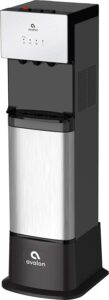
Water coolers are appliances that are designed to cool and dispense drinking water. They are commonly used in homes and offices, and come in a variety of sizes and styles to meet different needs.
Water coolers can be categorized into two main types: bottled water coolers and point-of-use (POU) water coolers. Bottled water coolers require the use of pre-filled water bottles, which are typically made of plastic and come in various sizes. The bottles are placed on top of the cooler and connected to a dispenser that releases the water when a button is pressed or a lever is pulled.
In contrast, point-of-use water coolers are connected directly to a water source, such as a plumbing line or a water filtration system. They do not require the use of water bottles and provide a continuous supply of drinking water.
Water coolers can also be classified by their cooling mechanisms. Some water coolers use compressor-based cooling, which works similar to a refrigerator, while others use thermoelectric cooling, which is more energy-efficient but takes longer to cool the water.
Some water coolers also offer additional features, such as hot water dispensers or water filtration systems, which can remove impurities and improve the taste and quality of the water. Water coolers can also be designed to fit different styles and settings, such as countertop models for smaller spaces, freestanding models for larger rooms, or even built-in models that can be integrated into kitchen cabinets or other furniture.
When selecting a water cooler, it is important to consider factors like size, cooling capacity, energy efficiency, ease of use, and maintenance requirements. It is also important to choose a model that meets health and safety standards and to follow the manufacturer’s instructions for installation, use, and maintenance. (See More)
12. Water Dispenser Replacement Parts
Water dispenser replacement parts are components that can be used to repair or replace parts of a water dispenser that are damaged or worn out. These parts are designed to be compatible with a wide range of water dispenser models and brands, and can help to extend the lifespan and improve the performance of the appliance.
Some common water dispenser replacement parts include:
Water dispenser faucets: These are the spouts that dispense the water from the dispenser. Over time, they can become clogged or damaged, requiring replacement.
Drip trays: Drip trays are designed to catch any spills or drips that may occur during use. They can be easily removed and cleaned, and can be replaced if they become damaged or worn out.
Water dispenser bottles: Water dispenser bottles are designed to hold and dispense water. They can be made of plastic or glass, and come in a variety of sizes and shapes to fit different dispenser models.
Water dispenser pumps: Some water dispensers use pumps to move the water from the bottle or reservoir to the dispenser faucet. These pumps can become worn out or damaged, requiring replacement.
Water filters: Water filters are designed to remove impurities and improve the taste and quality of the water. Over time, they can become clogged and less effective, requiring replacement.
Thermostats: Thermostats are used to regulate the temperature of the water in the dispenser. If they fail, the water may not be at the desired temperature and the dispenser may not work properly.
Compressors: Some water dispensers use compressors to cool the water. If the compressor fails, the dispenser may not cool the water properly.
When selecting water dispenser replacement parts, it is important to choose parts that are compatible with the specific model and brand of the dispenser. It is also important to follow the manufacturer’s instructions for installation and maintenance to ensure safe and effective operation of the appliance. (See More)
Essential Kitchen and Bathroom Fixtures conclusion
In conclusion, kitchen and bathroom fixtures are essential components of any home. They not only provide functional benefits, but also contribute to the aesthetic and overall value of the property. From sinks and faucets to garbage disposals and hot water dispensers, there are a wide range of fixtures available to meet different needs and preferences.
When selecting fixtures for your kitchen or bathroom, it is important to consider factors like size, style, durability, and maintenance requirements. By choosing high-quality fixtures and properly maintaining them, you can ensure that they continue to provide reliable performance and enhance the functionality and appeal of your home.

